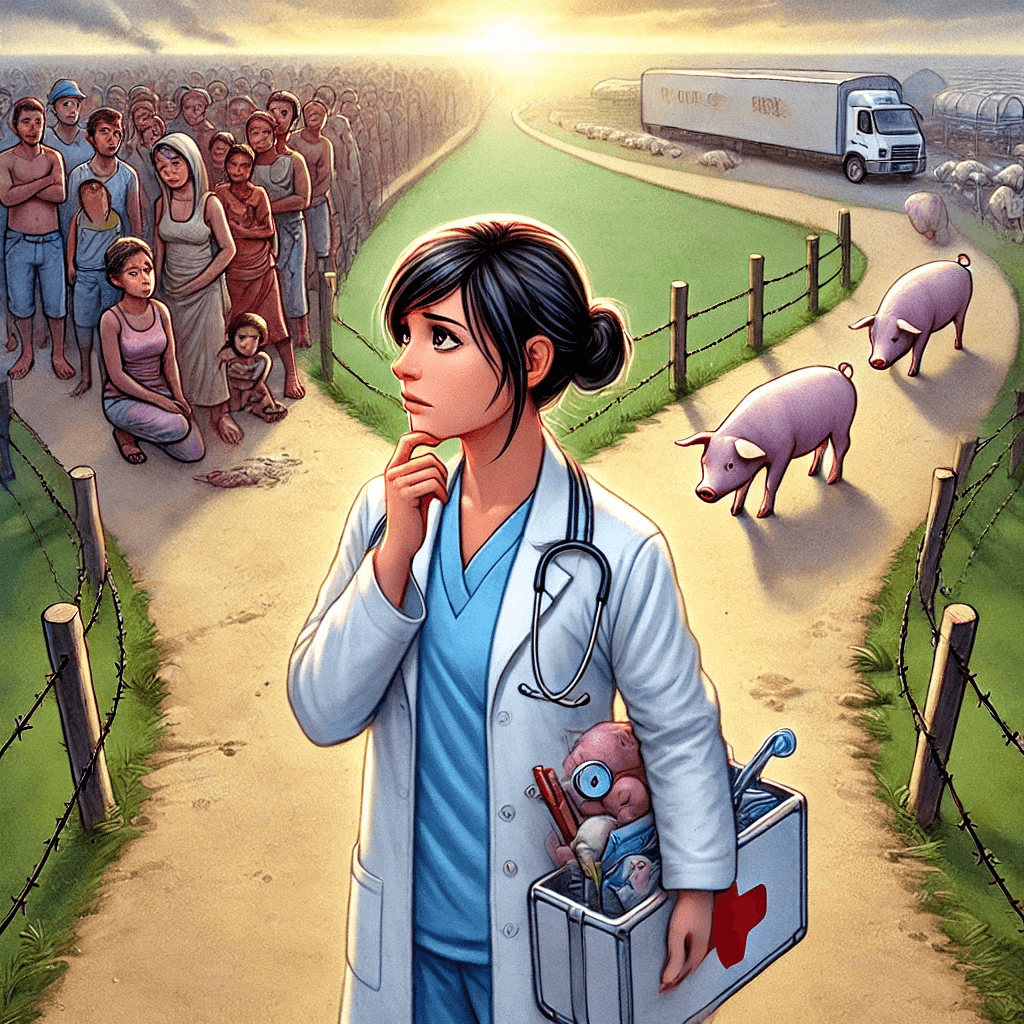A Doctor’s Perspective on Factory Farming - Part 1: Pandemics
When I talk with friends and family about my passion to help animals who suffer for human food production, most people, vegan or not, are very sympathetic to this goal. But some people do ask, given problems like poverty and disease, shouldn’t we try to improve the situation of humans first? As a future physician, I’m naturally very sympathetic to this view.
But factory farming isn’t just a problem for animals, it is also a serious human health risk. In these two posts I want to explain how the suffering of animals in factory farms also increases the risk of harmful health outcomes for humans. I will argue that ending factory farming practices can have big benefits for the health and wellbeing of humans as well as their future flourishing.
The relationships between the health of humans, animals and the environment is sometimes called the One Health framework. Other FarmKind blog posts have already showcased the important connection of factory farming and climate change. In this post, I will explain how factory farming increases the risk of zoonotic diseases and future COVID-style pandemics.
How factory farming increases the risk of zoonotic diseases
“Zoonotic diseases” is a term used to describe the spread of diseases from animals to humans. Right now, the world is experiencing a worrying rise in cases of one such disease: bird flu. Other examples of zoonotic diseases from the recent past include swine flu and COVID-19. Going back further, many devastating infectious diseases, e.g. pox, measles, or tuberculosis, had their origin in animal domestication.
Many other zoonotic diseases are spread via close contact between humans and wild animals. But, again, factory farming makes this problem worse because this is often a forced contact, due to destruction of natural habitats to grow crops to feed factory farmed animals, which drives wild animals into closer proximity with humans. This highlights how environmental destruction, factory farming and human health are interconnected and need to be addressed in a One Health approach.
The system of factory farming also makes the spread of zoonotic disease within farmed animal populations more likely. In factory farms animals such as pigs, cows or chickens are kept in extremely dense conditions where they are often not able to move freely, turn themselves around or spread their wings. It is important to keep in mind that these conditions are not the exception, but the rule. In the US it is estimated that about 99% of animals raised for meat production live in factory farms. This environment induces extreme stress responses in the animals bodies and psyche. Bodily stress responses impact the immune system and make the animals more vulnerable to infectious diseases. Those can then spread faster through the whole group of animals and eventually also infect humans.
How factory farming helps zoonotic diseases become new pandemics
Every zoonotic disease carries the risk of becoming an epidemic or pandemic. Most pandemics are caused by viruses which tend to mutate during their reproduction, allowing them to spread more effectively or infect new species more easily. These mutations make the spread of disease from animals (e.g. pigs or chickens) to humans possible. The more animals we have in confined conditions with contact to other species, the higher the probability of an eventual, devastating infection.
Such transmissions can either occur directly from domesticated animals to farm workers or indirectly via the contact between domesticated and wild animals. Factory farming directly contributes to the increased risks of new pandemics. In the COVID-19 pandemic, many of us experienced the detrimental effects pandemics can have on our health and our lives first-hand. By continuing to rely on factory farming for our meat, we’re making another pandemic much more likely.
Besides factory farming, the risks for a new zoonotic pandemic are further increased by the unfolding of climate change and wildlife habitat destruction fueled by the increased demand for animal feed. A change of our food production towards more plant-based foods and away from industrial factory farming practices could also support pandemic prevention efforts by helping to slow down this destruction of the environment that is making pandemics more likely.
The bottom line: Factory farming is a health risk
As we've seen, the problems of factory farming extend far beyond the immediate suffering of animals. In the next post, I’ll explain how factory farming is also contributing to one of the most serious future health risks we face, the rise of antimicrobial resistant diseases.
As a future physician, I am deeply concerned with the human health risks that these practices pose. Addressing the interconnected health risks through a One Health framework, which recognizes the interdependence of human, animal, and environmental health, is crucial. By ending factory farming and shifting towards more sustainable and humane food production practices, we can not only alleviate animal suffering but also promote better health outcomes for humans and support the long-term flourishing of our planet.
Ultimately, advocating for the end of factory farming is not just about animal welfare; it is about creating a healthier, safer, and more sustainable future for all. By understanding and addressing the links between animal and human health, we can work towards a world where both humans and animals can thrive together.




